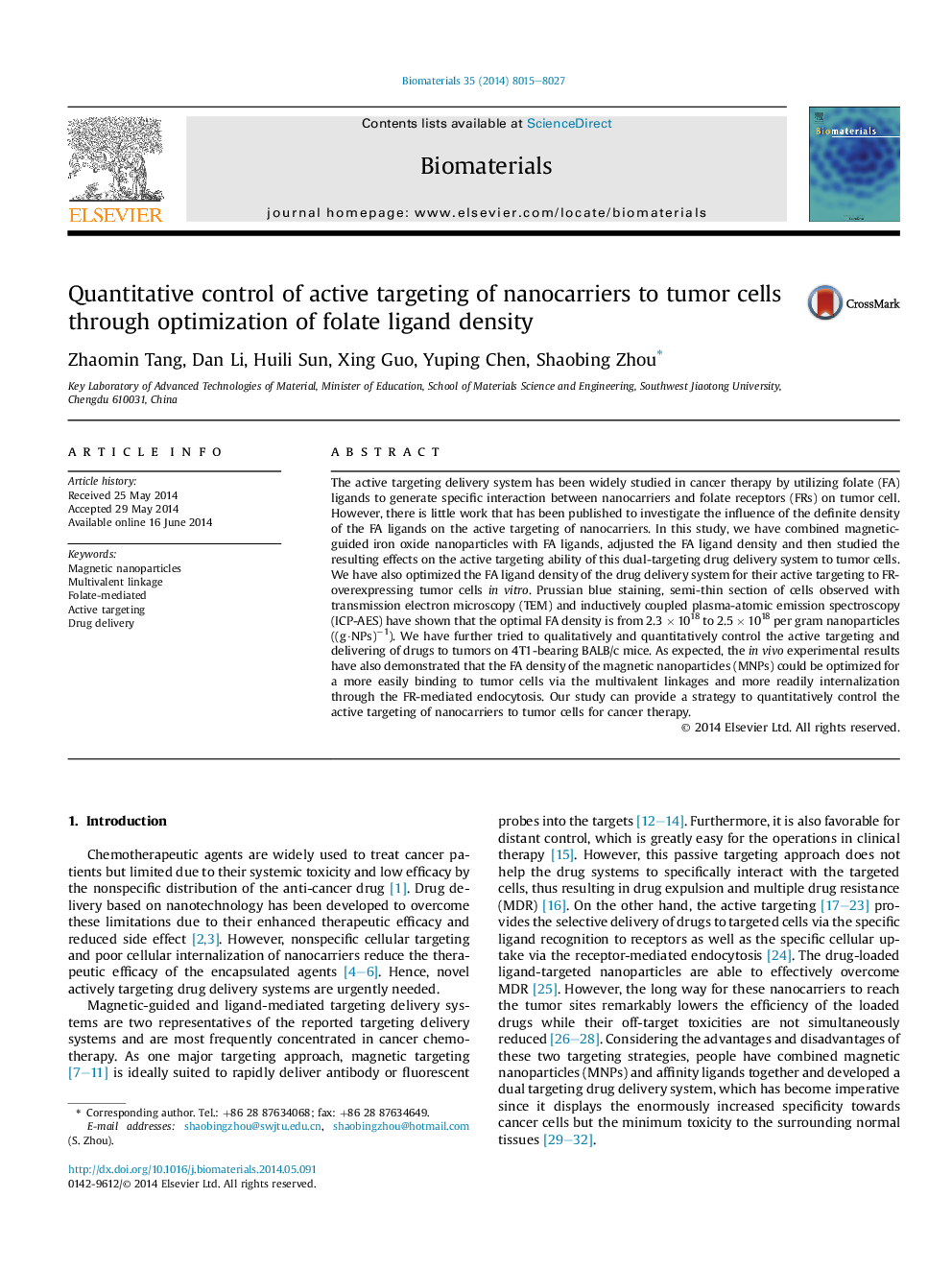| Article ID | Journal | Published Year | Pages | File Type |
|---|---|---|---|---|
| 5885 | Biomaterials | 2014 | 13 Pages |
The active targeting delivery system has been widely studied in cancer therapy by utilizing folate (FA) ligands to generate specific interaction between nanocarriers and folate receptors (FRs) on tumor cell. However, there is little work that has been published to investigate the influence of the definite density of the FA ligands on the active targeting of nanocarriers. In this study, we have combined magnetic-guided iron oxide nanoparticles with FA ligands, adjusted the FA ligand density and then studied the resulting effects on the active targeting ability of this dual-targeting drug delivery system to tumor cells. We have also optimized the FA ligand density of the drug delivery system for their active targeting to FR-overexpressing tumor cells in vitro. Prussian blue staining, semi-thin section of cells observed with transmission electron microscopy (TEM) and inductively coupled plasma-atomic emission spectroscopy (ICP-AES) have shown that the optimal FA density is from 2.3 × 1018 to 2.5 × 1018 per gram nanoparticles ((g·NPs)−1). We have further tried to qualitatively and quantitatively control the active targeting and delivering of drugs to tumors on 4T1-bearing BALB/c mice. As expected, the in vivo experimental results have also demonstrated that the FA density of the magnetic nanoparticles (MNPs) could be optimized for a more easily binding to tumor cells via the multivalent linkages and more readily internalization through the FR-mediated endocytosis. Our study can provide a strategy to quantitatively control the active targeting of nanocarriers to tumor cells for cancer therapy.
